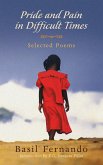About this publicationA¿htan¿r¿ Sand¿¿aya, "a poetical message through eight damsels", is a book of poetry found written on palm-leaf manuscripts or puskola poth in Sri Lanka in the Sinhala language. This work was composed by a poet who lived at Mæ¿iöuva village in Sath K¿rale towards the early period of the Kandyan Kingdom (1469 to 1815 AD). The purpose of this Sand¿¿aya (message of plea) was to wish Ulagalla Dis¿wa, a chieftain of Hurulu Pal¿ta in Nuvarakal¿viya, well, and to urge the blessing of holy deities for the release of lands and territories of his ancestral inheritance. The messengers of eight young women (damsels) traveled nearly 100 Kilometres from N¿thagane village (in Sath Korale), adjoining to the poet's village, to Gäul¿gan Vih¿ra (currently known as Thalagulu Vih¿raya) in Nuvarakal¿viya (Anuradhapura District), which is close to Ulagalla's mansion, to deliver the message of the plea.I collected palm-leaf manuscripts of this Sand¿¿aya, and compared and analyzed them. This effort enabled me to assemble potentially a credible version of the original Sand¿¿aya . The final outcome is this publication. Now it is presented to local Sri Lankan and international readers for the first time. A brief literary appreciation of the Sand¿¿aya revealed that the poet who emerged from a humble village in Sath K¿rale, had an understanding of the subtle nature of this auditory medium (Sand¿¿a poetry), creativity, poetic insight, and language proficiency. I observed the poet's capacity to elicit images, feelings, and meanings in the listeners' minds by employing effective styles including figures of speech and rhythmic qualities of the Sinhala language. Curiously, the story behind this Sand¿¿aya unravels a political struggle faced by chieftains of South Indian descent (Dravidian) in Nuvarakal¿viya. Ulagalla Disawa represents an ancestry of South Indian origin who won honorary names and chieftain positions with awards of lands and territories from the king Buvanekabahu of Dambadeni Kingdom (1220 to 1345 AD). A significant portion of South Indian migrant families of the elite, who moved to Sri Lanka during the medieval times, settled in Sath K¿rale and Nuvarakal¿viya and eventually absorbed themselves into Sinhala Buddhist society. The Sand¿¿aya starts from the village of N¿thagane, the capital city of the Mundukondapola regional kingdom (which encompassed Sath K¿rale) to which many families of the South Indian (Dravidian) elite flocked seeking chieftain positions and lands for settlements during Kotte and Sithawaka period. This Sand¿¿aya gives an insight into their ongoing struggle to maintain their power and privileges. By the time this Sand¿¿aya was written (in early 17th century) the power and privileges of Ulagalla ancestry seemed to have been dislodged and it was felt necessary to seek divine intervention for the restoration. It appeared that many chieftains in Sath K¿rale and Nuvarakal¿viya, who particularly had South Indian affiliation, expressed solidarity with the Ulagalla cause. They sponsored the pageant that carried the Sand¿¿aya along the route to Gäul¿gan Vih¿re. It is an intriguing factor to note that A¿htan¿r¿ Sand¿¿aya is not only a modest piece of poetry but also a story of an illusory ancestry.
Hinweis: Dieser Artikel kann nur an eine deutsche Lieferadresse ausgeliefert werden.
Hinweis: Dieser Artikel kann nur an eine deutsche Lieferadresse ausgeliefert werden.









